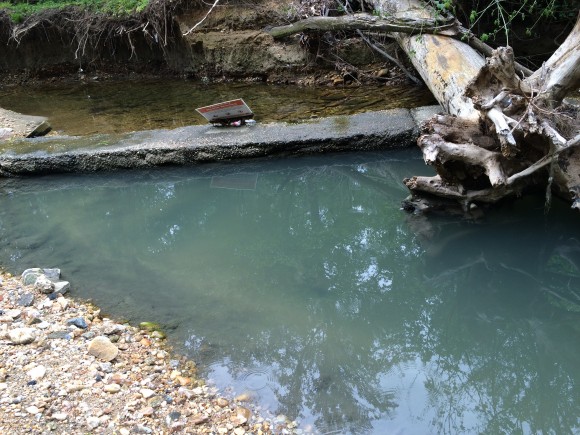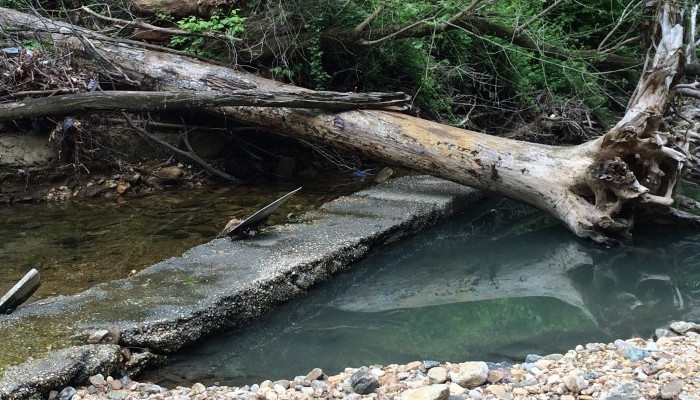Ongoing Sewage Leak in the Chinquapin Run
On May 12, 2016, a staff member at Blue Water Baltimore was on her way to investigate a report of illegal dumping in the Perring Loch neighborhood, and her route took her across the Loch Raven Boulevard bridge. While crossing the bridge, she was overwhelmed by the stench of sewage—a constant reminder of the ongoing sewage leak that is still polluting the Chinquapin Run more than seven weeks after it was originally detected.
The Baltimore City Department of Public Works first discovered that a 21-inch pipe was leaking raw sewage into the Chinquapin Run on March 30, 2016 but waited 23 days to report the ongoing problem to the public.
Public Disclosure
According to a recent Baltimore Brew article, this is because “the 15-gallon-per-hour leak hadn’t yet met the 10,000-gallon threshold for public disclosure.” This threshold is a reference to COMAR 26.08.10.08(C), a Maryland State regulation that requires the City to notify the public whenever a sewage overflow greater than 10,000 gallons has occurred.
But this requirement is superseded by another section of the regulation, COMAR 26.08.10.08(A), which states that the City must notify the public within 24 hours of a sewage spill if the overflow enters waters used for public recreation—where people boat, fish, or swim.
Recreation on the Waterway
People regularly use the Chinquapin Run and its receiving waterbody, the Herring Run, for fishing and other recreational purposes.
In fact, the Baltimore Department of Recreation and Parks hosted a fishing derby for families and children at Herring Run Park on April 10, 2016—10 days after the City discovered the sewage leak, and 12 days before a public notification was issued.

Dangers of Sewage Leaks
Timely public notifications of these sewage leaks are crucial in managing public health risks. Along with wastewater debris such as condoms, syringes, grease balls, and toilet paper, raw sewage carries harmful pathogens including Hepatitis viruses, Giardia bacteria, E. coli, and Salmonella.
People deserve the chance to make informed decisions about how they use their local waterways after a sewage overflow, but delayed notification means that they aren’t getting all the facts in a timely manner.
In this case, sewage bypass pumping mechanisms could keep the sewage and waterborne pathogens from flowing into the Chinquapin Run and Herring Run until repairs are complete. But when pressed by the Baltimore Brew about why DPW wasn’t planning on conducting any bypass pumping, spokesman Kurt Kocher stated, “bypassing at this location would be very costly.”
As of today, the sewage is still flowing without any effort to mitigate the contamination of the stream. According to DPW’s own calculation, approximately 26,000 gallons of sewage will have entered the Chinquapin Run by the time the work is slated to be complete.

